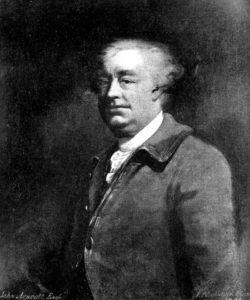Contact Us
By email:
info@one-place-studies.org
By post:
Society for One-Place Studies,
28 St Ronan’s Avenue,
Southsea, Hampshire, PO4 0QE
United Kingdom

It's April so it's time for our members to help us blog through the 2020 A-Z Blogging Challenge. Our chosen theme this year is Employment, also the topic of our Shared Endeavour where our members are encouraged to research employment within their one-place study. Today's entry is from Kirsty Gray.
My two one-place studies are close together and their boundaries change over time, hence Tetcott and Luffincott are both ‘my places’. They are small, isolated settlements in the far west of Devon just a few miles south of Holsworthy, and very close to the county border with Cornwall.
It is therefore somewhat astonishing that one of my little places has a jester, a dwarf jester in fact. Tetcott is situated in rolling parkland and has seen little change over time. At the centre of the village is a manor house with a church, farm and stables and several outbuildings including a granary. The Arscott family have played a key role in the history of the village. They were the junior branch of the Arscott family of Holsworthy with John Arscott purchasing the estate from the Earl of Huntingdon in the mid-sixteenth century.

The last of the Arscotts of Tetcott was John Arscott (1719 - 1788). He was renowned for eccentric behaviours and was described by Robert S. Hawker in Footprints of Former Men in Far Cornwall (Ed. C. E. Byles, Pub. John Lane, 1903) as "well-nigh the last of the jovial open-housed squires of the West of England". As well as having a pet toad, John also had a dwarf jester named Black John. He was reportedly hunchbacked and under 4ft tall. He followed the hounds on foot in north Cornwall and Devon (Tetcott Hunt still remains active today) and used to entertain dinner guests in eccentric fashion including swallowing live mice and retrieving them with string, leaving them unharmed. Birds weren’t quite so lucky as, with his lips, he "mumbled" the feathers of living sparrows.

Black John was loyal to his master and died of grief shortly after John died in 1788. The Museum of Witchcraft and Magic hold a postcard reproduction of an oil painting formerly owned by Rev. Hawker of Morwenstow, which I am keen to get a copy of at some point. There was an eighteenth century English provincial school full-length portrait of Black John which sold for £15,500 at Bearnes Hampton & Littlewood. Now, I have spent some money on my place study but that’s way out of my league!
Does anyone else have a jester in their place? I’d love to hear!
1 Comment
Janet Few
No jesters but ‘Bartlett the Buckland Brewer dwarf’ is mentioned in the press in the mid C19th – allegedy born c 1815 but I can’t identify him.